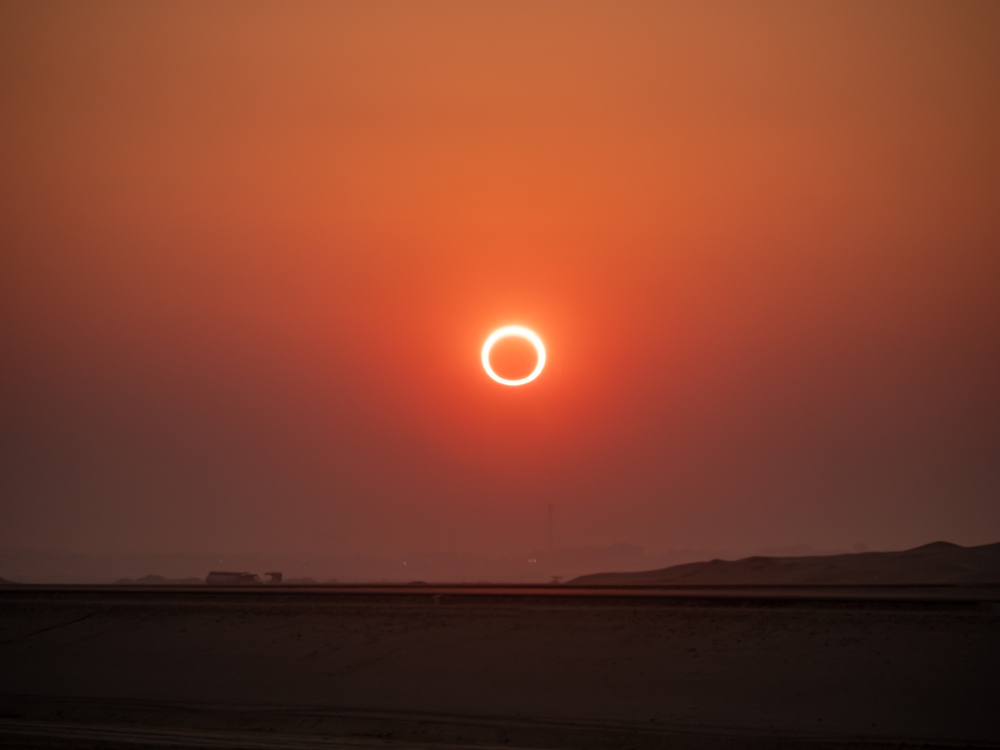On October 14, nature will present us with a rare celestial spectacle: an annular solar eclipse. This enthralling occurrence will light up the sky, transforming the sun into a dazzling “ring of fire.” While the will mostly take place over regions of the western United States, and Central and South America, its awe knows no bounds.
Safely enjoying the solar spectacle
An annular solar eclipse occurs when the moon passes between the Earth and the sun, briefly covering our star’s radiant light. An annular eclipse happens when the moon is at its furthest point from Earth, as opposed to a total solar eclipse when the moon fully obscures the sun. The moon seems somewhat smaller than the sun in this arrangement, leaving behind a stunning, bright ring—a visual marvel.
Now, let’s look at the safest ways to witness this awe-inspiring event.
Protective equipment and glasses
Directly staring at the sun during an annular solar eclipse is dangerous to your eyes. You must wear specialist eclipse glasses or filters to protect your vision. It is critical to remember that standard sunglasses will not suffice; NASA emphasizes that eclipse glasses are hundreds of times darker than typical sunglasses.
The website of the American Astronomical Society includes a list of reliable suppliers selling eclipse glasses and other solar viewing instruments. Visit participating libraries as part of the Solar Eclipse Activities for Libraries program to receive a free pair of eclipse glasses, with 5 million pairs distributed across 10,000 libraries in the United States.
The Optimist Daily also recently published a new and exciting method for observing the sun that involves disco balls! Read about it here.
Make your own eclipse projector
Consider making a basic pinhole projector for individuals looking for an indirect viewing approach that allows them to watch the eclipse without looking directly at the sun. A cardboard box, white paper, tape, scissors, and foil are all you need. Make a small hole in the foil, cover one side of the box, and allow sunlight to pass through, projecting a crescent-shaped sun picture onto the white paper inside. But remember, never look through the foil hole.
Nature’s hand: a solar eclipse revealed
To enjoy the eclipse without any extra equipment, extend your hands in front of you, fingers slightly apart and crossed (palms up may work better). Examine the shadows cast by your hands on the ground with your back to the light. On the ground, the spaces between your fingers will form a grid of little sun images. These photos will change into crescents as the moon partially covers the sun, providing a unique perspective of the eclipse. If you’re surrounded by trees, the spaces between the leaves will act as pinhole projectors during the eclipse, casting crescent or ring-shaped sun patterns on the ground.
NASA provides an official help page as well as an educational video guide for more thorough instructions.
Excellent viewing spots
The annular solar eclipse begins at 9:13 a.m. PDT in Reedsport, Oregon, and travels over many states, including Nevada, Utah, Arizona, Colorado, and New Mexico, before ending in Texas at 12:03 p.m. CDT. Beyond the limits of the United States, the eclipse will continue over the Yucatan Peninsula and parts of Central and South America.
NASA’s interactive Eclipse Explorer map is a useful resource for determining when and where the eclipse will be visible in your area, as well as the level of sun coverage. A live eclipse stream will also be available on NASA’s website beginning at 11:30 a.m. EDT.
Natural amphitheaters in Utah’s national parks
The annular eclipse will pass through Utah‘s national parks, including Bryce Canyon, Capitol Reef, and Canyonlands, and will provide superb views of the event. Partial eclipse views will also be available at Zion and Arches National Parks. Expect a surge of eclipse visitors, with Arches and Canyonlands expecting higher-than-usual attendance for this celestial event.
Remember NASA’s wise advice as you go on this journey: even during a partial or annular solar eclipse, protect your eyes by viewing the sun with suitable eye protection. First and foremost, put your safety first, and then watch nature’s extravaganza unfold before you.












